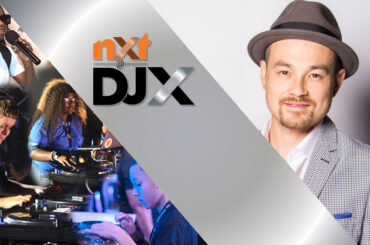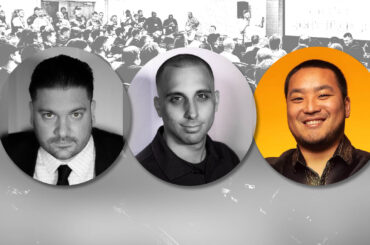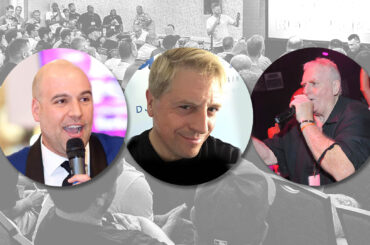Many EDM fans got hip to NGHTMRE at Ultra Music Festival 2015 when Skrillex dropped his initial release, “Street.” But the youthful producer (aka Tyler Marenyi) had been sharpening his studio (and business) skills for years before catching that big break.
Since then, he’s remained in the musical spotlight with notable trap/bass-leaning remixes, plus collabs on Mad Decent like “Need You” with Dillon Francis, “Gud Vibrations” with Slander, “End of the Night” with Ghastly, and the more recent “Embrace” with Carmada feat. Xavier Dunn. He’s also quickly become a club and festival favorite.
As he prepped for his “NGHTMRE Before Xmas Tour,” which will take him to Asia and Europe, DJ Times connected with the L.A.-based Marenyi to discuss his ascension.
DJ Times: Three words that describe a NGHTMRE production?
Marenyi: High-energy, melodic, and bass-heavy.
DJ Times: Your 2017 remix of Terror Squad’s “Lean Back” takes a classic track and completely retrofits it for a modern festival audience. What was your approach?
Marenyi: I was incredibly honored to be asked to remix such a classic hip-hop record. Everything from the vocals to the introduction of the original song is just so recognizable. I definitely felt it was important to stay true to the original and include those in the remix. My main focus was to keep the original vibe, but with punchier/heavier drums, and then transition into a festival/club-friendly song that can work in my live set. So far the reactions have been amazing!
DJ Times: You have voiced your love for bands like Led Zeppelin, Chili Peppers, Arctic Monkeys and Radiohead. What have you learned from rock acts?
Marenyi: What attracted me to all these artists was the uniqueness of their sound. The lead-guitar riffs and vocal melodies are amazing. I can’t say I’ve directly referenced any of these groups when writing new music, but I think the chord progressions and melodies that I come up with often reflect ones that sound a bit more rock-influenced.
DJ Times: What role has sound design taken in your music?
Marenyi: Having a unique sound design is still the most important part of the heavier tracks that I write. Endlessly experimenting until I find a cool new sound is usually the longest part of producing a song for me. In business school [at Elon University], I was constantly reminded that “innovation is the key to success.” That idea stuck with me and I really tried to apply it when I began releasing music as NGHTMRE. It was important that I focused on making it a re-occurring theme in my tracks.
DJ Times: What’s the key to getting other DJs to play your tunes?
Marenyi: Having a great mixdown is one of the most important things in making a DJ-friendly track. You can have an incredibly catchy song, but if there is something majorly wrong in the mixdown—like having a lead synth that is extremely harsh, or drums that are too quiet—many DJs will leave it out of their set. Having a simple arrangement is also important, if you want DJs to want to play your song. I still concentrate on having simple arrangements when I’m writing remixes and original tracks I know will perform well in a live setting. Also, writing in eight- and 16-bar phrases really makes a track easier to DJ with because you know when you need to finish mixing a track in or out.
DJ Times: How has the fan/artist dynamic changed in recent years?
Marenyi: I think fans expect to be able to relate and communicate with their favorite artists nowadays. Personally, I can always see the difference when I spend 30 minutes or so after a set, going to take pictures, or spend an hour responding to messages on Snapchat or Facebook. People just really—really—appreciate it. While it is a lot of extra work, artists who are willing to spend the extra time to respond to fans on social media, do meet and greets, and all that… well, they will really see the benefit of it in the long run.
DJ Times: How do you prep for your festival sets?
Marenyi: For a 60-minute set, I’ll play about 50 songs, and I usually load up between 100 and 150 songs onto my USB – they’re all organized by tempo. This allows me to have a playlist of songs that I most likely want to play, but also plenty of extras so I can freestyle a bit if I feel it’s necessary. Also, I create a new playlist for every show to keep things fresh and always have extra back-up playlists on my USBs just in case.
DJ Times: In the studio and onstage, what gear and programs do you use?
Marenyi: I use Ableton Live to make everything related to production – from producing my own songs to making edits to mastering. For DJing, I pretty much always just use Pioneer CDJ-2000s. Once you learn how to use them, it makes life much easier. Only having to show up to gigs with USBs and headphones allows you to bypass the stress of bringing a laptop to the club.
DJ Times: Any tips on making EDM that really connects?
Marenyi: If your song sounds great on piano or acoustic guitar, you can bet that it will sound great with nice-sounding synths and a heavier production. Starting out so simple also helps you envision, define and clarify everything else: your lead synth, vocal melody, supporting chords, and bassline. It’s really important to make sure you don’t overcomplicate the track.







